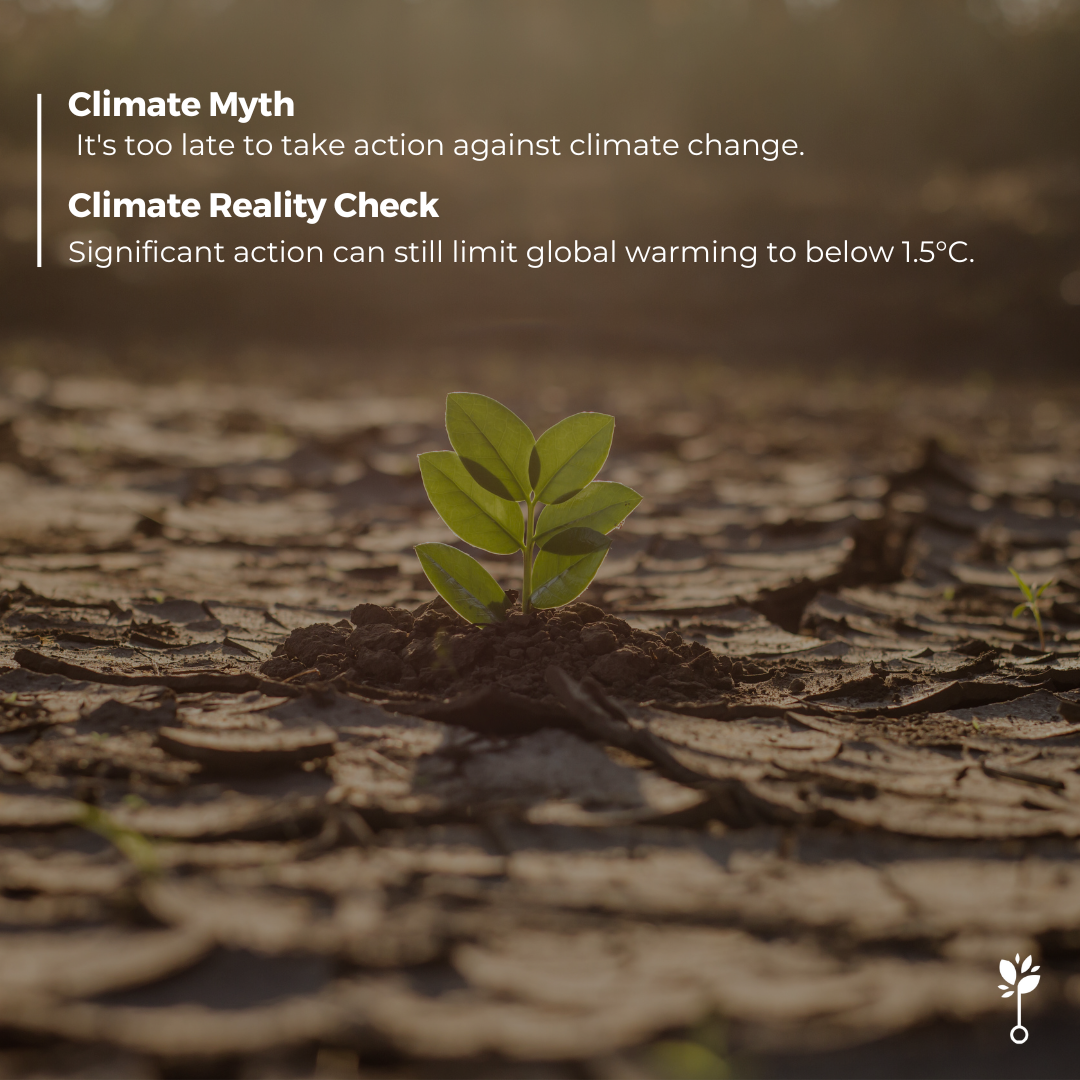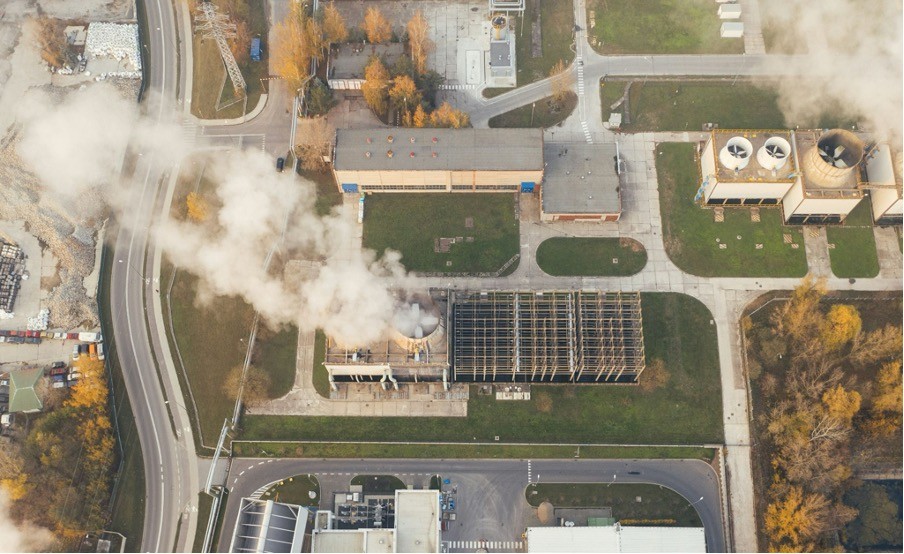Debunking climate myths

A pervasive myth surrounding climate change is the belief that it is too late to take effective action against its impacts.
Understanding the current situation
While human activities have already caused significant changes to the climate, it is not too late to mitigate further damage. If all greenhouse gas emissions were halted today, global temperatures would begin to stabilize within a few years. Although they would remain elevated for centuries due to existing atmospheric CO₂ levels, the immediate cessation of emissions would prevent additional warming from occurring. Experts estimate that without substantial action, global temperatures could rise by 2.5°C to 4.5°C (4.5°F to 8°F) by 2100, leading to catastrophic consequences for ecosystems and human societies[1].
According to The Intergovernmental Panel on Climate Change (IPCC), if global warming is successfully limited to 1.5°C, as established through the Paris Agreement, the world can expect several benefits:
-
- Reduced climate risks: Limiting warming to this level would significantly lower the frequency and severity of extreme weather events, such as heatwaves, floods, and droughts.
-
- Ecosystem preservation: Biodiversity loss would be less severe, allowing ecosystems to maintain their functions and services.
-
- Health benefits: Improved air quality and reduced health risks associated with climate change would lead to better public health outcomes.
-
- Economic stability: A stable climate would support sustainable economic growth and reduce the costs associated with climate adaptation and disaster recovery.
If efforts to limit global warming fail, we are likely to exceed the critical threshold of 1.5°C, leading to severe environmental and societal consequences[2]. This includes an increased frequency of extreme weather events, which would disrupt agriculture, water supplies, and infrastructure. Additionally, public health would deteriorate due to rising air pollution and heat-related illnesses, posing significant challenges. The economic impact would also be profound, with escalating financial costs associated with climate change effects, including disaster recovery and adaptation efforts. Overall, failing to limit warming could result in widespread disruption and instability across multiple sectors of society.
The importance of mitigation and adaptation
Addressing climate change requires a dual approach: mitigation and adaptation[3]. Mitigation involves reducing greenhouse gas emissions, while adaptation focuses on adjusting to the climate changes already set in motion. Both strategies are essential in managing the risks associated with climate change.
Even if we were to stop all emissions immediately, natural processes would eventually help remove excess carbon dioxide from the atmosphere, leading to a gradual decline in temperatures over time. Although it may take decades for significant changes to become apparent, every effort made now will contribute to a more sustainable future.
The U.S. National Academy of Sciences’ America’s Climate Choices reports emphasize the need for a major shift in energy production towards renewables like solar, wind, and nuclear to meet international greenhouse gas reduction targets. While some propose geoengineering methods, such as atmospheric particle injection or ocean iron seeding, many scientists caution against these due to potential side effects and ethical concerns. The American Meteorological Society warns that the benefits of geoengineering are uncertain and should not detract from the urgent need for emissions reductions.[4]
Conclusion
The notion that it is too late to combat climate change is misleading. While immediate action is crucial to limit future warming and its associated risks, it is clear that there are still opportunities to influence the trajectory of our planet’s climate.
[1] https://science.nasa.gov/climate-change/faq/is-it-too-late-to-prevent-climate-change/
[2] https://www.ipcc.ch/sr15/
[3] https://science.nasa.gov/climate-change/faq/is-it-too-late-to-prevent-climate-change/
[4] https://www.climate.gov/news-features/climate-qa/can-we-slow-or-even-reverse-global-warming
Other News

EU reaches agreement on pioneering carbon removal certification framework
Negotiators from the Council and the European Parliament have made an achievement by reaching a provisional political agreement on establishing the first EU-level certification framework for permanent carbon removals, carbon farming, and carbon storage in products.
